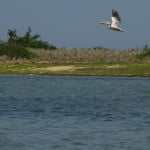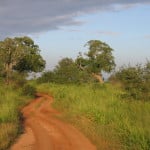The Bundala National Park is a famous national park in Sri Lanka that is internationally recognized as being a wintering ground for migratory aquatic birds in Sri Lanka. The Bundala National Park is only one of its kinds and offers you the chance to see estuarine, saltwater and freshwater crocodiles on a same safari. Coupled with this fact that this place has exceptional plant life presence and it enhances the attractiveness of the park to the tourists. The national park is situated in the Tissamaharama Road in the Hambantota city. It is also located 245 kilometers southeast of Colombo.
Furthermore, Bundala was created in 1969 as a Sri Lanka wildlife sanctuary and in 1993; it re-designed to a national park. In addition to this, it became the first-ever wetland to proclaimed as a Ramsar site in Sri Lanka. Besides, UNESCO had chosen the Bundala National Park as a biosphere reserve in 2005 and on that it became the fourth biosphere reserve in Sri Lanka. So, let’s know about the Bundala National Park in details.




Things to see in Bundala National Park
Explore the eco-tourism appeal of Bundala National Park: This national park is hugely popular for its eco-tourism appeal and the tourists flock in numbers to explore the eco-friendly environment of this park. The national park consists of seven terrestrial habitat types and six wetland types, which altogether makes the ecological areas of the national park. Moreover, the dry and prickly shrubs and herbs are seen in large numbers in the park. As of now, there 383 plants have been discovered in the park and they belong to 90 families in total. In the lagoons of the park, Hydrilla (such as Embilikala and Malala) is the plant that is most seen with blue-green algae dominates (such as Oscillatoria, Nostoc, Macrocystis) the Phytoplankton in every lagoon as well.
Generally, the national park’s trees are Manilkara hexandra (Palu in Sinhalese), Salvadora persica, and Drypetes sepiaria, Bauhinia racemosa, less known Feronia limonia, Azadirachta indica & Chloroxylon swietenia. Additionally, Halosarcia indica and Salicornia brachiata are prime examples of salt-tolerant plants. Furthermore, the Lumnitzera racemosa trees are in large quantity in the small degraded patch of mangrove or on the lagoon are.
See the Reptiles and Amphibians in the Bundala National Park: In the Bundala national park, 15 amphibious species along with 48 specifies of reptiles have been recorded. The most exciting and highlighting species are the crocodiles because both estuarine and mugger crocodiles live in this park. What’s more, the estuarine crocodile is the largest crocodile that is currently living on the planet. Besides, this crocodile can weigh as much as 1,200 kg and the male crocodile is seven meters long whereas female crocodile happens to be only three meters. With this gigantic crocodile, there are Star Tortoises, Pythons, Rat Snakes, Common Monitor Lizards, Cat Snakes, Whip Snakes, and endemic Flying Snakes are also seen on the national park. On top of that all five endangered species of marine turtle come to the national park to use this place as a breeding ground.
Things to do in Bundala National Park
Get amazed while discovering the wildlife of the Bundala National Park: The wildlife spectacle of this national park is quite amazing. It is home to 32 diverse species of mammals with five among them are classified as endangered. Aside from the bird sanctuary, there are huge and attractive wildlife animals in the park, especially the elephants. The number of these elephants is small, but you can still observe them by herds or walking along the beach single.
Additionally, other types of mammals comprise, Sambar, Barking Deer, Common Langur, the Spotted Deer, the endemic Toque Macaque, Rusty-spotted Cat, Mongoose, Wild Boar, Jackal, Fishing Cat, Mouse Deer and the Black-napped along with the Sri Lankan Leopard (not seen in the Yala National Park). To add to these mammals, there are 324 species of vertebrates, which include -32 species, are fish, 15 are amphibians, 48 are reptiles, 197 are birds and 32 are mammals. Finally, there is 52 species of butterflies that live in the park as well.
Indulge yourself in bird watching at the bird sanctuary of Bundala National Park: Watching birds at the Bundala National Park bird sanctuary is one the best tourist activities. This bird sanctuary is home to almost 200 migratory birds, which come to this place from around the world. Among these birds, the most famous and highlighting bird is the Great Flamingo. With this famous bird, the other endemic species are the Sri Lanka Jungle Fowl and Sri Lanka Wood shirke along with the Brown-capped Babbler. On the other hand, all the migratory birds include both common and rare sighted birds like – Marsh and Curlew Sandpipers, Common Redshank, Kentish Plovers, Lesser and Large Sand Plovers, Ruff, the Bundala specialist Red-necked Phalarope, Little Stints, and the Broad-billed Sandpiper.




How is the weather of Bundala National Park?
The weather of the Bundala National Park is classified as hot and dry weather with an average temperature of 28 °C. Also, the yearly average rainfall in the national park is 1075 mm.
How to reach Bundala National Park?
You can reach the Bundala National Park from Colombo by three different routes – along the coast via Galle, Matara, Tangalle, Hambantota (160miles) and also passing through Ratnapura, Pelmadulla, Embilipitiya, and Hambantota (152miles). Furthermore, you can also reach this national park by catching the Southern Expressway. First, depart the expressway in Galle and go carry on onwards passed Matara and Tangalle. It will take three or four hours to reach the park from Colombo. Additionally, you can also journey by taxi and you have to take a taxi from the Colombo (Peliyagoda) and reach Hambantota first. From Hambantota, you can easily reach the park by road or helicopter.
Distance from Major Travel Destinations
Colombo to Bundala National Park – 244km
Kandy to Bundala National Park – 244km
Bentota to Bundala National Park – 185km
So, the Bundala National Park is one of the great places in Sri Lanka where there is plenty of wildlife species and endemic plants. You will be best served if you go on a safari trip to explore the park because only a safari trip can uncover all the beauties of this amazing national park.
For inquires contact Olanka Travels. Check our Sri Lanka 1 month itinerary to include Bundala National Park.










